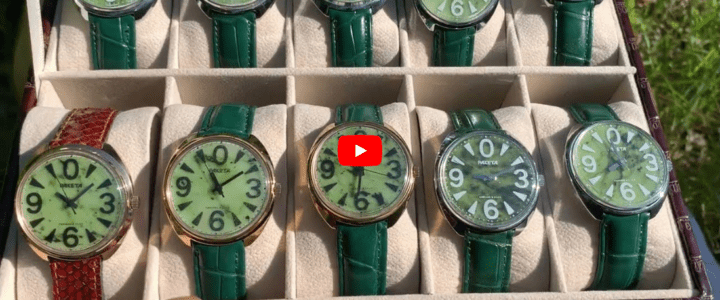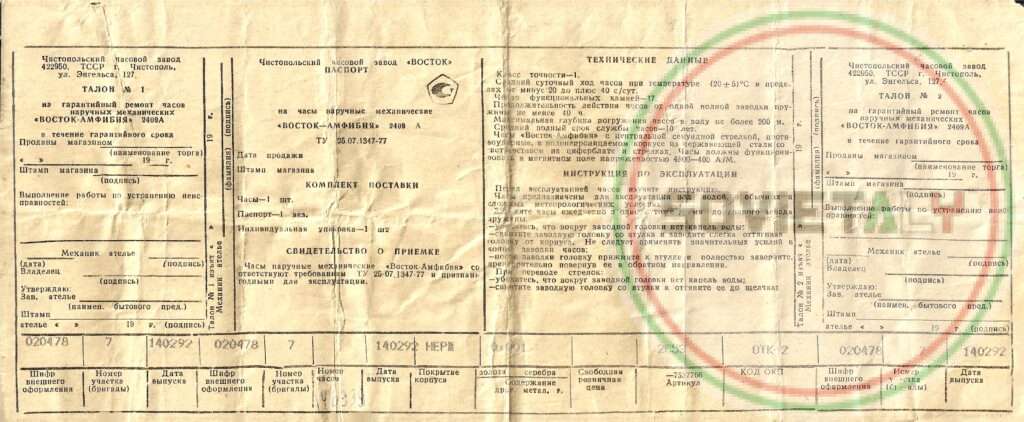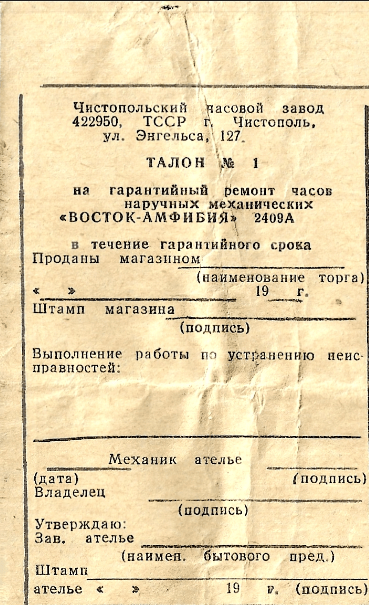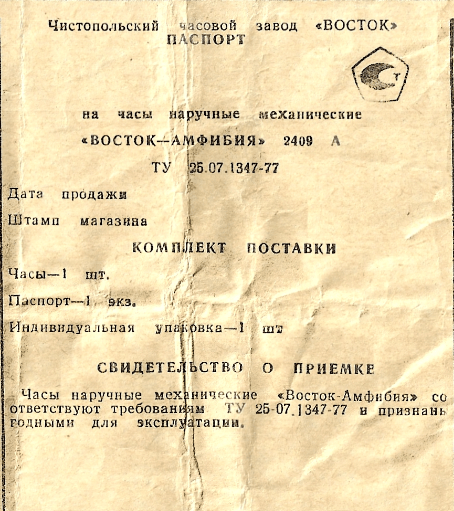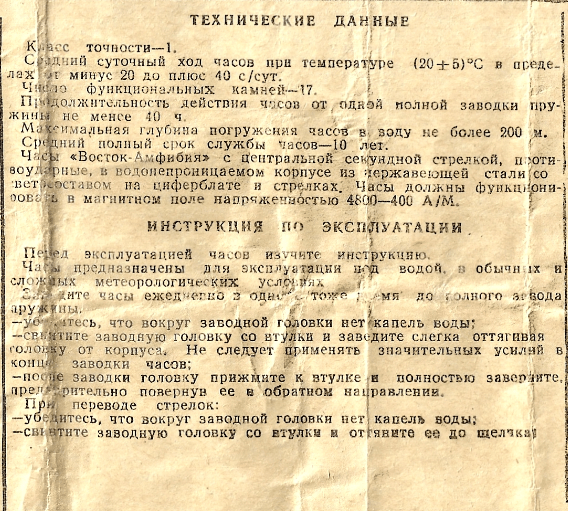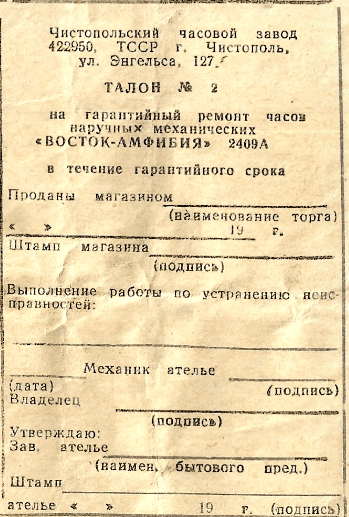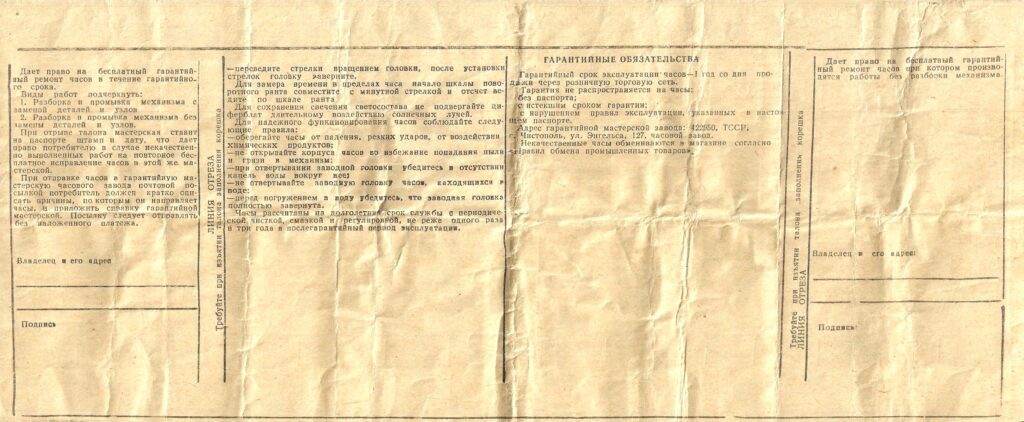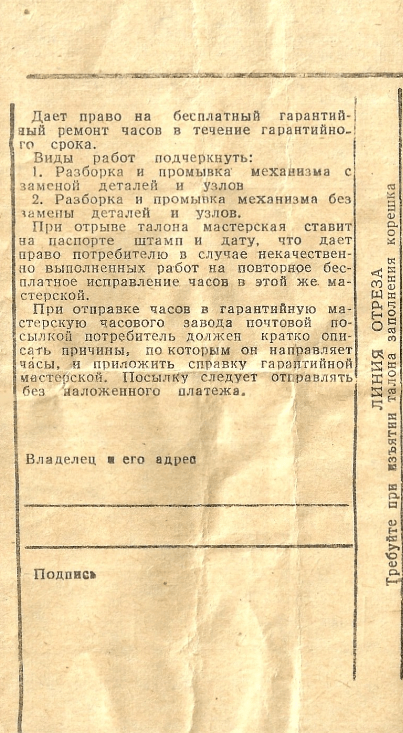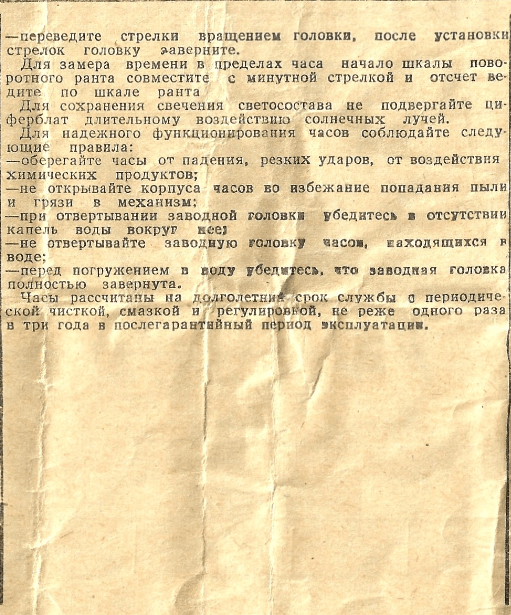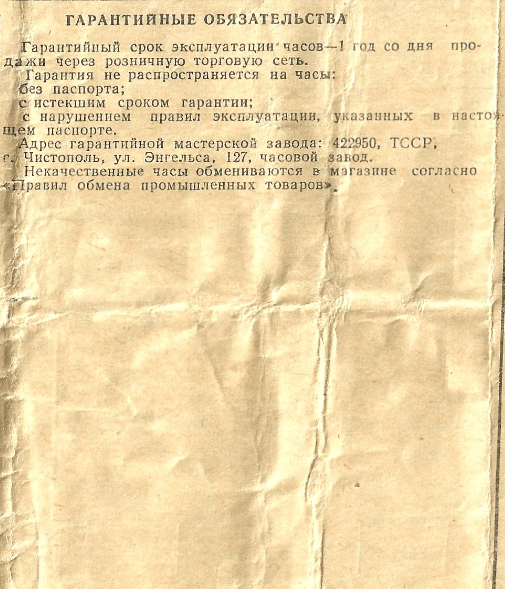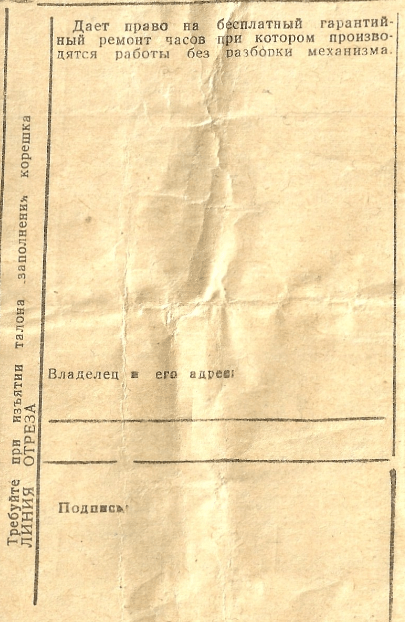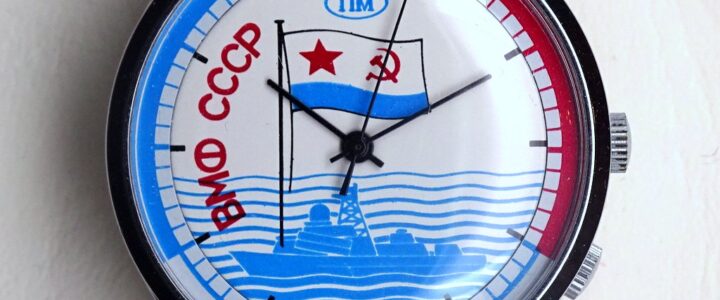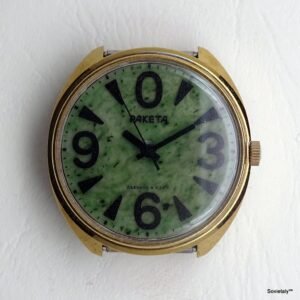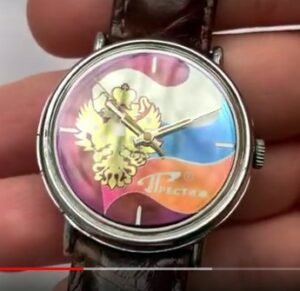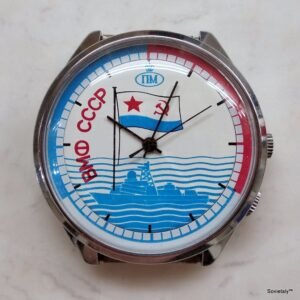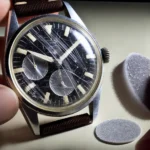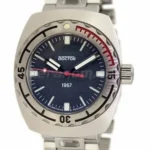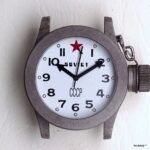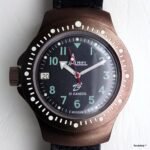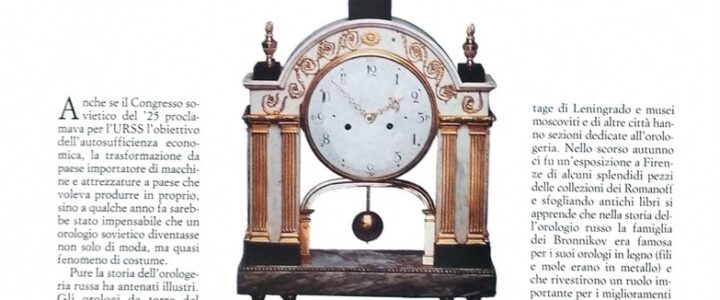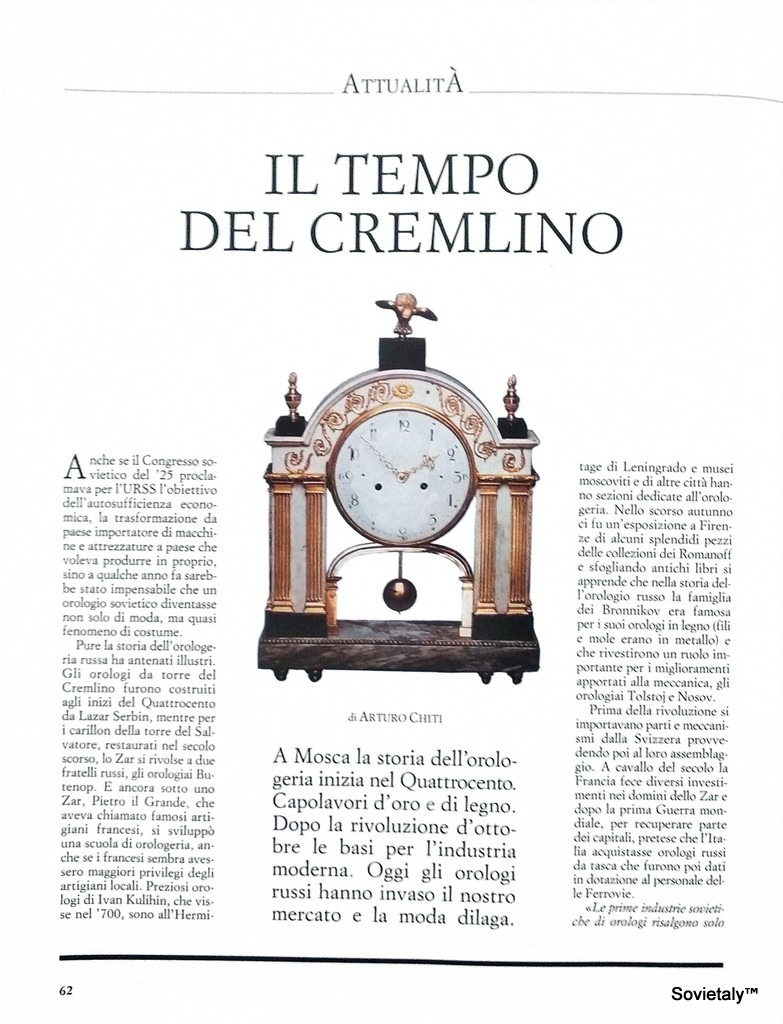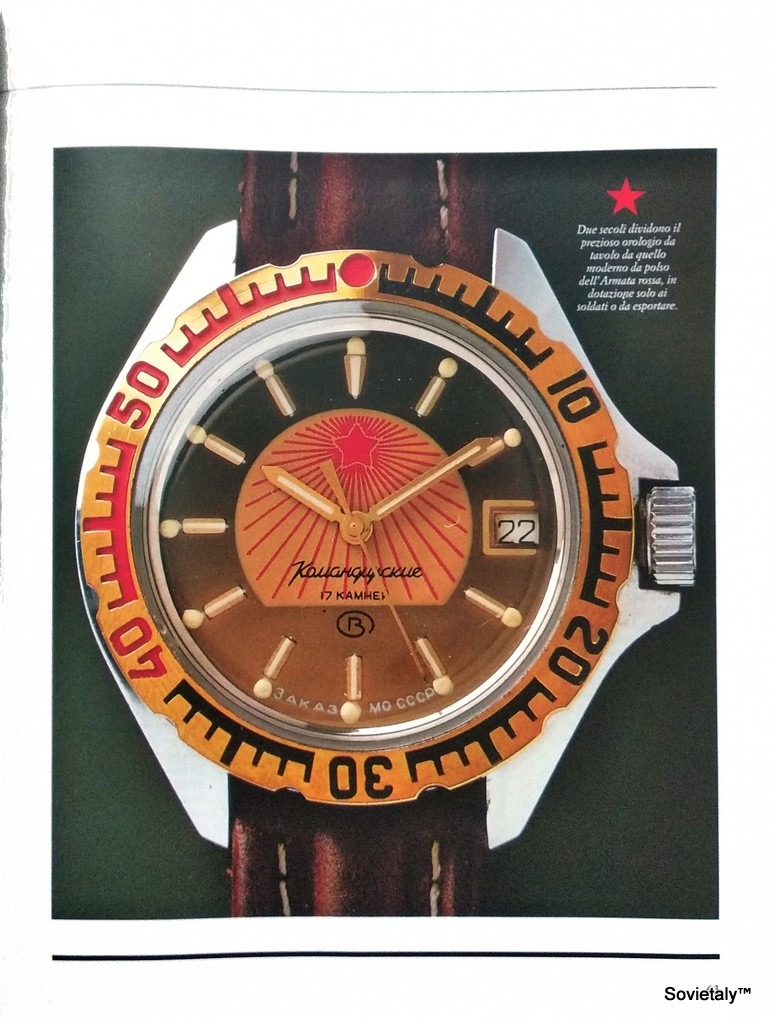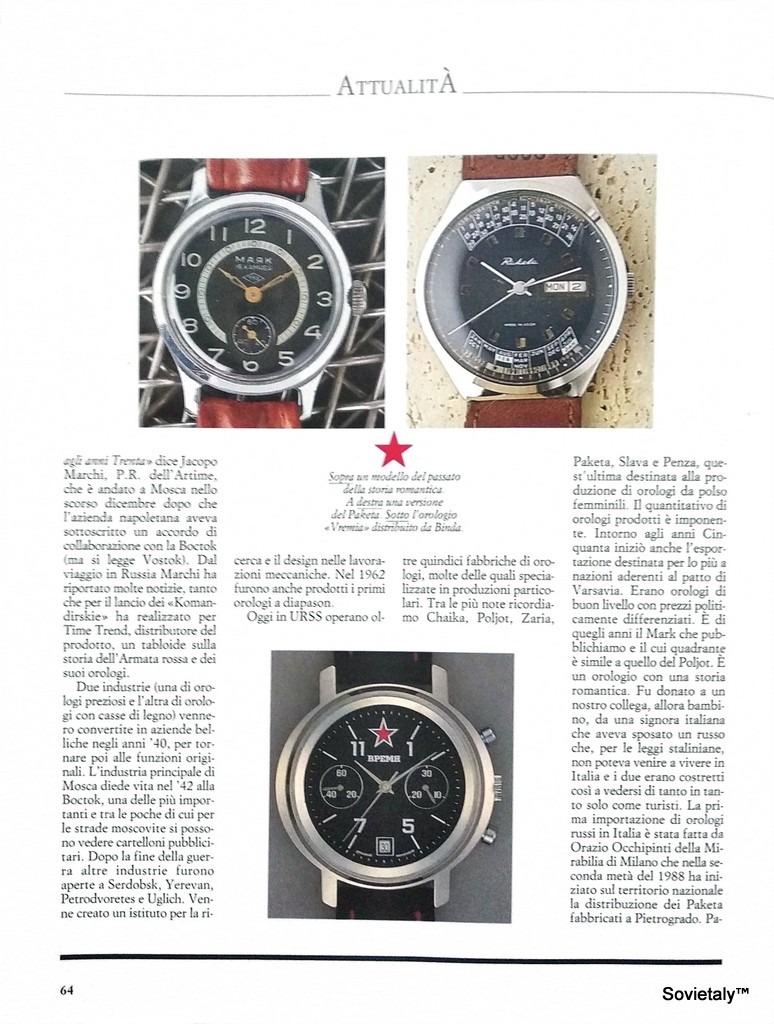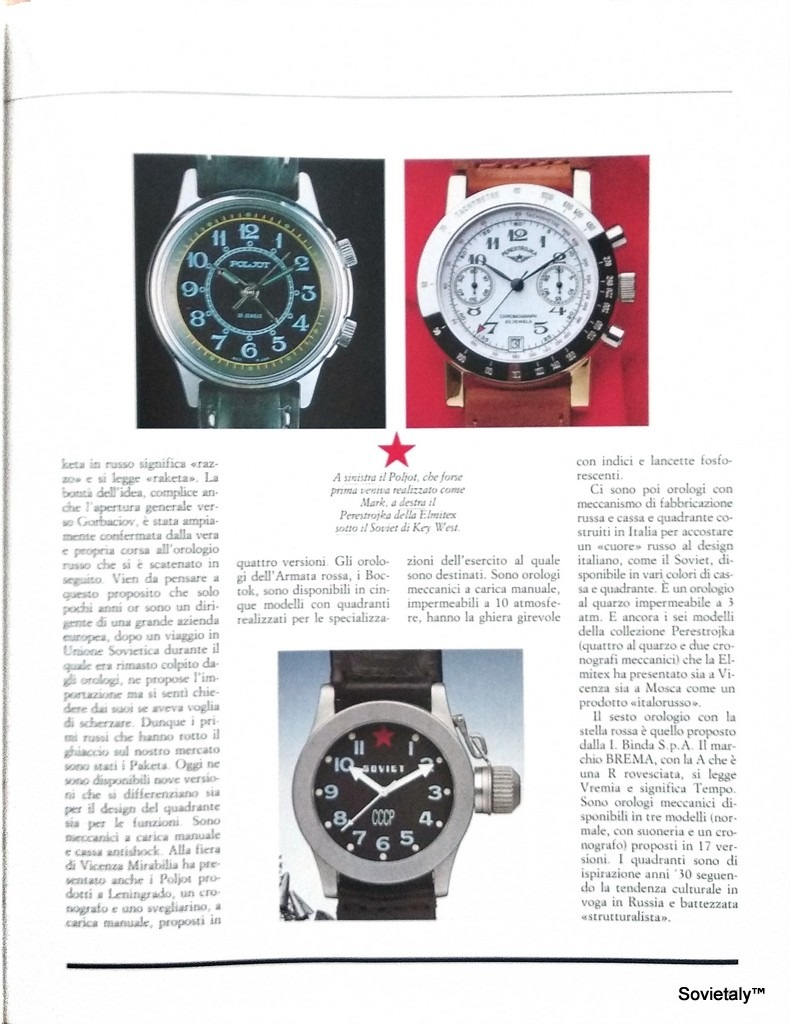In the video titled “Дмитрий Бродниковский-уникальные каменные часы Ракета-Big Zero Зеро из нефрита СССР ПЧЗ” (translation: “Dmitry Brodnikovskiy – Unique Rare Raketa-Big Zero Zero Jade Stone Watches USSR PChZ”), Dmitry Brodnikovskiy guides us through the discovery of a particularly rare watch: the Raketa Big Zero with jade dials, produced in the late 1980s.
Key Features
Dial: Made of natural jade with a thickness of 0.5 mm, each dial boasts a unique and unrepeatable texture. Available colors include yellow and classic chrome.
Case: Brass with chrome plating for classic models or titanium nitride for yellow ones, with a diameter of 38 mm, typical for the Big Zero series.
Movement: Raketa caliber 2609, featuring a high triple minute and a high hour wheel to accommodate the thickness of the dial.
Hands: Nickel-plated for chrome models and identical to those of the classic Zero model with a white dial for yellow ones.
Limited Edition: These watches were produced in limited quantities, not available for general sale, and were made to order, mainly for the Italian market.
Variants: In addition to jade dials, the Big Zero model was produced with perestroika-themed dials and with the quality mark.
Details on Titanium Nitride Case Models
Models with titanium nitride cases stand out for some peculiar features:
- Dial: Yellow with black numbers, indexes, scale, and hands.
- Hands: Identical to those of the classic Zero model with a white dial.
Raketa Watch Factory
Located in the city of Petrodvorets near St. Petersburg, the Raketa watch factory has written an important page in Soviet watchmaking history. Initially a supplier for the army, Raketa soon distinguished itself for its ability to combine tradition and innovation, creating not only functional timepieces but also design masterpieces. Among its most iconic creations are watches with stone dials, authentic handcrafted jewels that represent an invaluable cultural heritage.
A Laboratory of Experimentation and Beauty
The genesis of Raketa’s stone dials dates back to the first workshop of the Petrodvorets watch factory. Here, skilled craftsmen engaged in meticulous research for alternative materials for watch dials, experimenting with various natural stones. The goal was to create timepieces that were not only durable and functional but also aesthetically unique and capable of telling the story and beauty of the earth.
Unparalleled Aesthetics: The Charm of Stone
Among Raketa’s stone dial models, one in particular captures attention for its extraordinary beauty. The presenter of the video describes it as the most beautiful in the collection, enchanted by the saturation of colors and the unique and unrepeatable texture of the stone. Each dial, in fact, represents a unique piece, the result of meticulous craftsmanship and the unpredictability of nature itself. The stone, with its veins and inclusions, becomes the absolute protagonist, giving the watch an unmistakable identity and timeless charm.
A Heritage of Tradition and Reliability
In addition to their unparalleled aesthetic value, Raketa stone dial watches also boast solid and reliable construction. All models in the collection feature organic glass, chrome cases, stainless steel case backs, and the robust Raketa caliber 2609 mechanical movement. These elements ensure not only refined aesthetics but also longevity, making them precious objects to be carefully preserved even today.
A Piece of History to Be Passed Down
Today, Raketa stone dial watches are considered rare collectible items, sought after by enthusiasts and lovers of Soviet craftsmanship. They represent a tangible testimony of an era when ingenuity and creativity came together to create objects that were not only functional but also true works of art. Their timeless beauty and fascinating history make them true treasures to be passed down from generation to generation.
A Legacy That Lives On Today
Raketa’s legacy lives on today in the spirit of innovation and research that animates the brand. It continues to produce high-quality watches, appreciated for their unique design and high performance. However, stone dial watches remain a standalone chapter in the factory’s history, an indelible symbol of the ingenuity and craftsmanship that have made Raketa a legendary name in the world of watchmaking.

